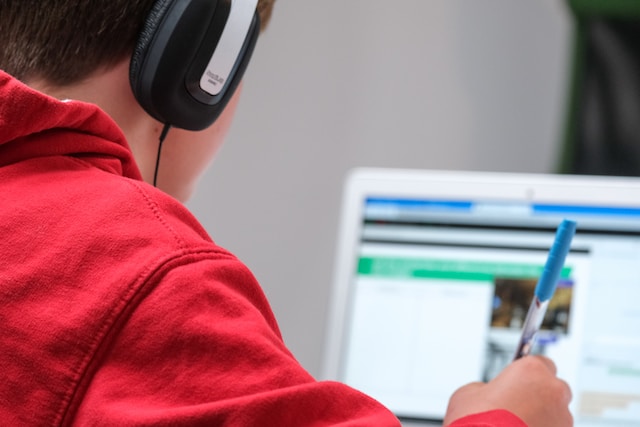In the past decade, online education has revolutionized the way Americans learn. With the rise of technology and accessibility to high-speed internet, students are no longer confined to traditional classroom settings. The convenience and flexibility that online education offers have given learners greater control over their learning experience. However, as with any new innovation, there
In the past decade, online education has revolutionized the way Americans learn. With the rise of technology and accessibility to high-speed internet, students are no longer confined to traditional classroom settings. The convenience and flexibility that online education offers have given learners greater control over their learning experience. However, as with any new innovation, there are pros and cons to consider. In this blog post, we will explore both sides of the debate and examine what the future holds for online education in America. So sit back, grab a cup of coffee (or your preferred beverage), and join us on this journey into the world of virtual classrooms!
Background on Online Education
Online education can be traced back to the early 1990s, when universities began offering distance learning programs. These programs were primarily designed for students who lived in remote areas or had limited access to traditional classrooms.
However, it wasn’t until the late 2000s that online education started gaining widespread popularity due to advancements in technology and changes in student preferences. The rise of Massive Open Online Courses (MOOCs) such as Coursera and edX allowed anyone with an internet connection to enroll in courses from some of the world’s top universities for free.
Today, online education has become a global phenomenon. According to recent data from the National Center for Education Statistics, over 6 million American students are enrolled in at least one online course. This number is expected to continue growing as more institutions offer flexible and affordable online degree programs.
While there is no doubt that online education has transformed the way we learn, it is important to weigh both its benefits and drawbacks before fully embracing this new model of education.
Pros and Cons of Online Education
Online education has quickly become a popular alternative to traditional classroom-based learning. While it offers many benefits, there are also some potential drawbacks that students should consider before making the switch.
On the pro side, online education can be much more flexible than in-person classes. Students can often complete coursework at their own pace and on their own schedule, allowing them to balance school with work or other commitments. Online courses may also offer greater access to educational resources and experts from around the world.
However, one of the biggest cons of online education is that it requires self-motivation and discipline. Without regular face-to-face interactions with teachers and peers, students may struggle to stay engaged and accountable for their own learning.
Another potential drawback is that certain fields or industries may place less value on degrees earned through online programs compared to those earned in person. Additionally, technical issues such as poor internet connection or malfunctioning equipment can disrupt learning experiences.
While online education certainly has its advantages, it’s important for students to carefully weigh both the pros and cons before deciding if it’s right for them.
The Future of Online Education in America
The future of online education in America is undoubtedly bright. With the increasing popularity and acceptance of eLearning, more and more students are opting for online courses over traditional ones.
One major advantage of online education is its flexibility. Students can learn at their own pace and schedule, making it easier to balance work, family, and school. Additionally, many universities now offer fully accredited degrees through their online programs.
Another advantage is the cost-effectiveness. Online courses are often less expensive than traditional brick-and-mortar ones due to lower overhead costs for institutions offering them.
However, there are still some challenges that need to be addressed such as ensuring access to high-speed internet in rural areas or providing adequate support services for students who may struggle with an entirely virtual learning environment.
It’s clear that online education will continue to grow in popularity as technology advances and more institutions embrace this mode of instruction. The future outlook points towards a world where distance learning will play an increasingly important role in higher education across America.
Conclusion
Online education has become more than just a trend. It is now an integral part of the American education system. While there are some challenges associated with online learning, the benefits far outweigh them.
The rise of technology and connectivity has made it possible for students to access high-quality educational resources from anywhere in the world. Online courses have also made it possible for working adults to further their education while maintaining full-time employment.
As we move forward, we can expect to see even more advancements in online education technology and instructional design. This will lead to better student outcomes and increased accessibility for learners from diverse backgrounds.
The future of online education looks bright. As long as institutions continue to prioritize student success and invest in innovative technologies and teaching methods, students will be able to take advantage of all that this mode of learning has to offer.

















Leave a Comment
Your email address will not be published. Required fields are marked with *